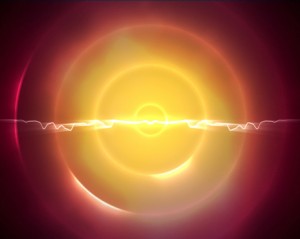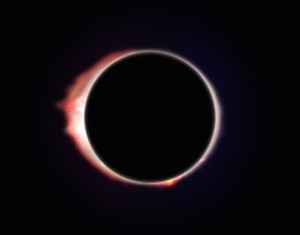Circus of Dreams (Part 10)
By Asher Crispe: November 28, 2012: Category Decoding the Tradition, Inspirations
To Light Up the Night
 One of the most important axioms of Lurianic Kabbalah asserts that concepts do not exist in point-like isolation but rather always form constellations or ‘partzufim.’ Each of the appearances of a given concept logs a new definition. Yet these definitions are not merely listed in a series nor delineated as a spectrum. Assembling them into a distributed complex pattern allows for interplay between each of the ‘points’ which in turn produces a positive tension that allows for the emergence of a networking effect.
One of the most important axioms of Lurianic Kabbalah asserts that concepts do not exist in point-like isolation but rather always form constellations or ‘partzufim.’ Each of the appearances of a given concept logs a new definition. Yet these definitions are not merely listed in a series nor delineated as a spectrum. Assembling them into a distributed complex pattern allows for interplay between each of the ‘points’ which in turn produces a positive tension that allows for the emergence of a networking effect.
The most basic model of a constellation corresponds to the powers of the soul and the channels of Divine creativity known as the sefirot. While they are normally depicted as 10 in number, an even more nuanced assessment reveals the possibility of an 11th dimension which adds greater completeness to the other 10. For the next few articles in our series we will begin assembling an 11 level constellation of figurative meanings of the Samech (and the circle that it forms). Taking such a thorough inventory will disclose that every power of the soul or every channel of Divine creativity has circle symbolism all its own.
Opening the Torah, we can harvest from the text all kinds of additional information by examining the initial context where a word or concept appears. Since the Samech as a circle is the subject of our inquiry, we should look for the first time that this letter appears in the Genesis narrative. Along with this, we may also contend that where it is expected but absent in the text is just as revealing as where it is present.
For starters, surprisingly there is no Samech in the whole of the description of the set-up week of Creation. The other conspicuous absence in this same week is the Tetragrammaton. We only see the name Elokim which refers to God as nature or the immanent side of Divinity. Not until the second account of Creation, beginning in Genesis 2:4, is the Tetragrammaton (which signifies God above nature or the transcendent aspect of Divinity) mentioned. Both of these absences are explicitly noted in Kabbalah. What conceptual commonality could they possibly have?
The Samech embodies the power to transform reality. The way things naturally appear to be does not have to always be this way. Support for change comes from the ‘revolver’ of the Samech. All of the natural world can be placed on spin-cycle (circle) which brings about the revolution or transformation. Such changes refuse the natural world as we first find ourselves within it and instead seek to transcend the limitations of nature. Thus the expression of Havayah, or the Tetragrammaton providing support (Samech), is evidenced in the Psalms 145:14 “God [Tetragrammaton] supports [Samech] the fallen….” Once again, there is sufficient syntactic ambiguity to read an equivalency between this transcendent aspect of Divinity (Tetragrammaton) and the support of the Samech. He [God] is our ‘support-circle.’ In the Hebrew this is even clearer as “Somech (Samech/support) Yud-Hei-Vav-Hei (Tetragrammaton) l’chol ha’nofelim (for all the fallen).” This ‘fall’ would be a descent into the natural consciousness of the world or an ontological deterioration–a perceived lesser state of Being/being. The ‘support’ of the transcendent raises the natural back up to the level of the supernatural–our re-enchantment with nature (the miracle of nature) via the mutability of nature (spin).
Coming in from out of the shadows, the concealed circle or Samech that was unwritten and unknown in the first Genesis account has an almost identical meaning in its first and second appearances when it is finally used in the subsequent account. On the surface, both times the Samech shows up as the first letter of the word sovev which means to surround. The letter that literally depicts a circle leads or heads the word of that which ‘surrounds.’ The first time is in Genesis 2:11 “The name of the one [river] is Pishon which surrounds [sovev סבב with a Samech but without a Vav under the holam vowel] all of the land of Chavilah.” Just two verses later, we get the second Samech in Genesis 2:13 “The name of the second river is Gichon. It surrounds [sovev סובב again with the Samech only this time with the Vav under the holam) all the land of Kush.”
Every Samech is a double Samech. We even see this in the spelling of its name in Hebrew, Samech (60), Mem (40), Kaf (20) which adds up to 120 (the number of years of the life of Moshe/Moses who was himself the greatest supporter of the Jewish people). The letter by itself has the value of 60 (the first circle) but when it is spelled in full the addition of the Mem (40) and Kaf (20) gives us another 60 or a second circle (Samech). It’s a double ring of support. Interestingly, the life of Moshe/Moses (120 years) is punctuated with the same divisors: he lives for 20 years (Kaf) in Egypt in the house of Pharaoh before he flees into the desert where he lives as a Shepard for 60 years (Samech) until at the age of 80 when God reveals Himself to him at the burning bush. The mission to redeem the people and lift them from their fallen state of exile in Egypt into the land of Israel, lasts for the remaining forty years of his life (Mem). Moreover, geotagging his biography shows that 20 (Kaf) and 40 (Mem) year periods contended with the adversity of Egypt, while during the other 60 years (Samech) he is relatively removed from the conflict.
 Beyond the years of the life of Moshe/Moses relating to the double Samech, the notable difference between the two types of ‘surrounding’ in the above passage in Genesis demands further elucidation. The key difference lies in the spelling: in the first instance the word lacks the Vav (which symbolizes the link that connects above to below or a drawing down and concretization of some abstract experience) under the holam vowel which means a ‘dream.’ The ‘surreal’ quality of the dream in this first instance remains totally inaccessible to our conscious minds. We have no recourse to the instruments of knowledge because the channel for tapping into the experience is ‘formally’ absent. With the second example of a ‘surrounding’ property that relates to the dream world of the holam vowel, the vowel does have a Vav positioned under it. The connection has been established. Here, the dreamscape may hover over my consciousness but I can still relate to it. At least some part can be funneled into my conscious mind.
Beyond the years of the life of Moshe/Moses relating to the double Samech, the notable difference between the two types of ‘surrounding’ in the above passage in Genesis demands further elucidation. The key difference lies in the spelling: in the first instance the word lacks the Vav (which symbolizes the link that connects above to below or a drawing down and concretization of some abstract experience) under the holam vowel which means a ‘dream.’ The ‘surreal’ quality of the dream in this first instance remains totally inaccessible to our conscious minds. We have no recourse to the instruments of knowledge because the channel for tapping into the experience is ‘formally’ absent. With the second example of a ‘surrounding’ property that relates to the dream world of the holam vowel, the vowel does have a Vav positioned under it. The connection has been established. Here, the dreamscape may hover over my consciousness but I can still relate to it. At least some part can be funneled into my conscious mind.
Differentiating two levels of ‘surrounding’ or non-localizable experience works as follows:
First, we encounter one which remains separate from my conscious mind in the remote unconscious and is referred to in Kabbalah as a makif ha’rachok or a ‘distant surrounding’ soul property.
Second, we transition from total dark to the initial glow and shimmering in that dark which ‘touches without touching’ and functions as a floating horizon of conscious or pre-conscious and is officially called a makif ha’karov or ‘close surrounding’ soul property.
In Part 11 we will tease out the correlation between these two surrounding levels of dream experience and the first two soul powers (Keter and Chochmah).
http://www.interinclusion.org/inspirations/circus-of-dreams-part-11/
http://www.interinclusion.org/inspirations/circus-of-dreams-part-9/























;)
;)
;)
;)
;)
;)
;)
;)
;)
;)
